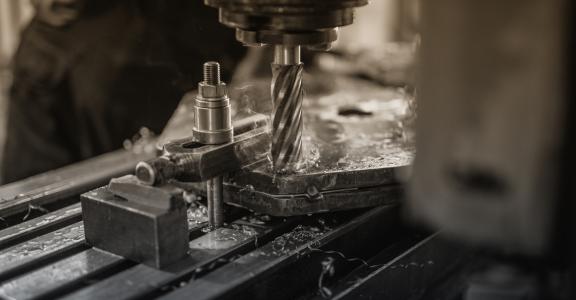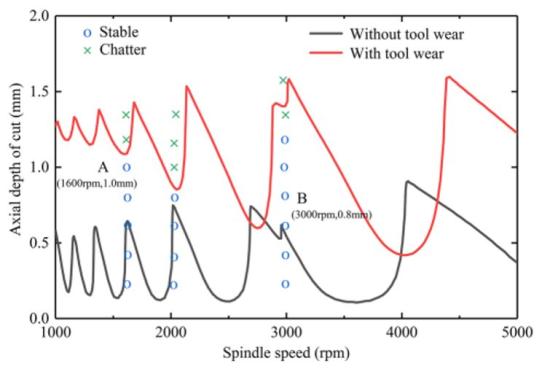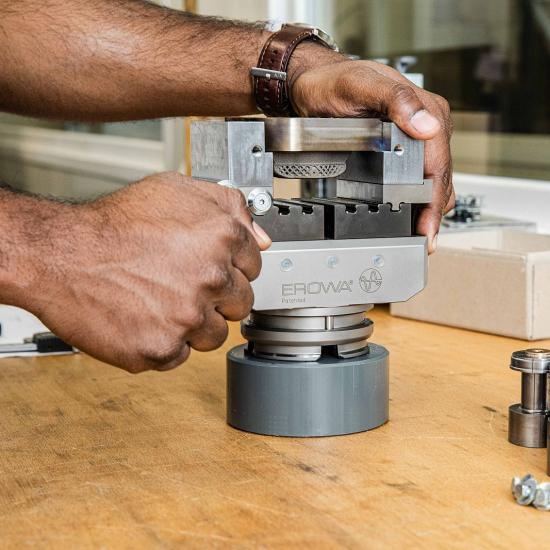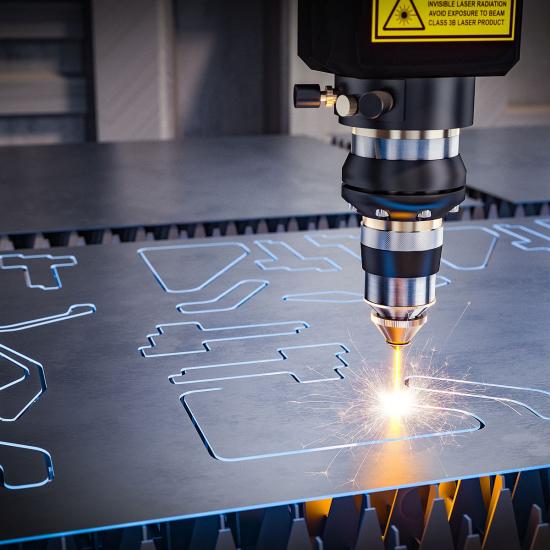Tool wear is one of the time-varying factors during machining operations that influence the process parameters and the quality of the final parts being made. Typically, cutting tools follow a sequence of wear evolution, starting from initial wear, over to gradual degradation, accelerated wear and finally leading to complete failure. This wear progression can influence the dynamic stability of the process as well.
Dynamic instabilities while machining, such as vibrations and chatter, could be corelated with tool wear and tool life. These instabilities have always been associated with their negative effects on the surface quality and dimensional accuracy, but it is also important to understand their effect on the tool wear. The process instability caused by tool wear involves variations in cutting forces and torques, and machining chatter.
Chatter
Machining chatter are self-excited vibrations which are regenerative in nature arising due to process instabilities. Typically, the overall stability behaviour of a particular machining operation can be characterized by stability charts or lobe diagrams. This chart shows the regions of stable and unstable behaviour as a function of machining parameters, like spindle speed and depth of cut. Chatter-free zones are identified with predictive models and stability lobes. However, it has been known that the onset of chatter instability changes as the tool wear progresses. Cutting forces increases with the increase in tool wear. This variation in the forces can cause the process to go from a stable zone to an unstable zone and vice versa. When tool fank wear increases, the tool–workpiece contact area enlarges, which causes process damping.
This is illustrated in an example below, while milling a titanium alloy with a new and a worn tool:
Stability lobe with and without wear while machining Titanium alloy (Source: International Journal of Advanced Manufacturing Technology)
This means that tool wear should be considered while determining the stable cutting parameters or during process optimizations to ensure higher process stability. This can help to provide a theoretical basis for on-line monitoring of machining process with sensors.
Online platform
On the 'modelgebaseerdbewerken' online platform you can already estimate the tool life with different parameters of you process. You can also access models like milling economics model and use them to optimise your machining processes. Access to the platform is free of charge, but you need to register. You will also find the necessary explanations about working with the models on the platform, but be sure to keep an eye on the Sirris agenda because we will be organising both physical and online events like webinars and workshops.
Would you like to know more? Then get in touch with us!
The online platform is part of the COOCK project 'Model-based processing', which was launched with support from VLAIO.




